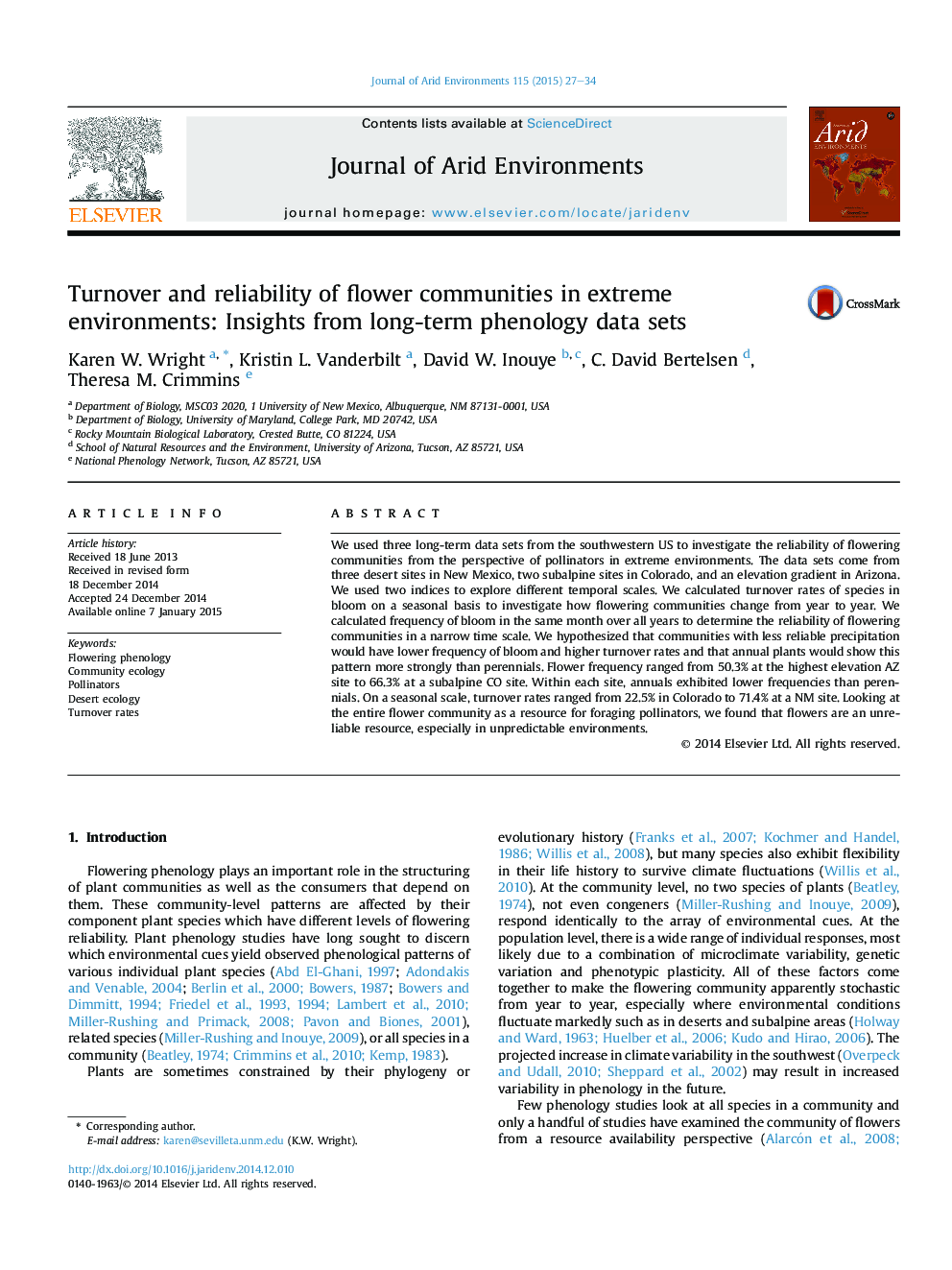| Article ID | Journal | Published Year | Pages | File Type |
|---|---|---|---|---|
| 4392928 | Journal of Arid Environments | 2015 | 8 Pages |
•We use three long-term data sets to examine reliability of flower communities.•We use frequency and turnover rates to examine reliability.•We found that extreme environments have unreliable flowering communities.•We found that annuals are less reliable than perennials, on average.
We used three long-term data sets from the southwestern US to investigate the reliability of flowering communities from the perspective of pollinators in extreme environments. The data sets come from three desert sites in New Mexico, two subalpine sites in Colorado, and an elevation gradient in Arizona. We used two indices to explore different temporal scales. We calculated turnover rates of species in bloom on a seasonal basis to investigate how flowering communities change from year to year. We calculated frequency of bloom in the same month over all years to determine the reliability of flowering communities in a narrow time scale. We hypothesized that communities with less reliable precipitation would have lower frequency of bloom and higher turnover rates and that annual plants would show this pattern more strongly than perennials. Flower frequency ranged from 50.3% at the highest elevation AZ site to 66.3% at a subalpine CO site. Within each site, annuals exhibited lower frequencies than perennials. On a seasonal scale, turnover rates ranged from 22.5% in Colorado to 71.4% at a NM site. Looking at the entire flower community as a resource for foraging pollinators, we found that flowers are an unreliable resource, especially in unpredictable environments.
